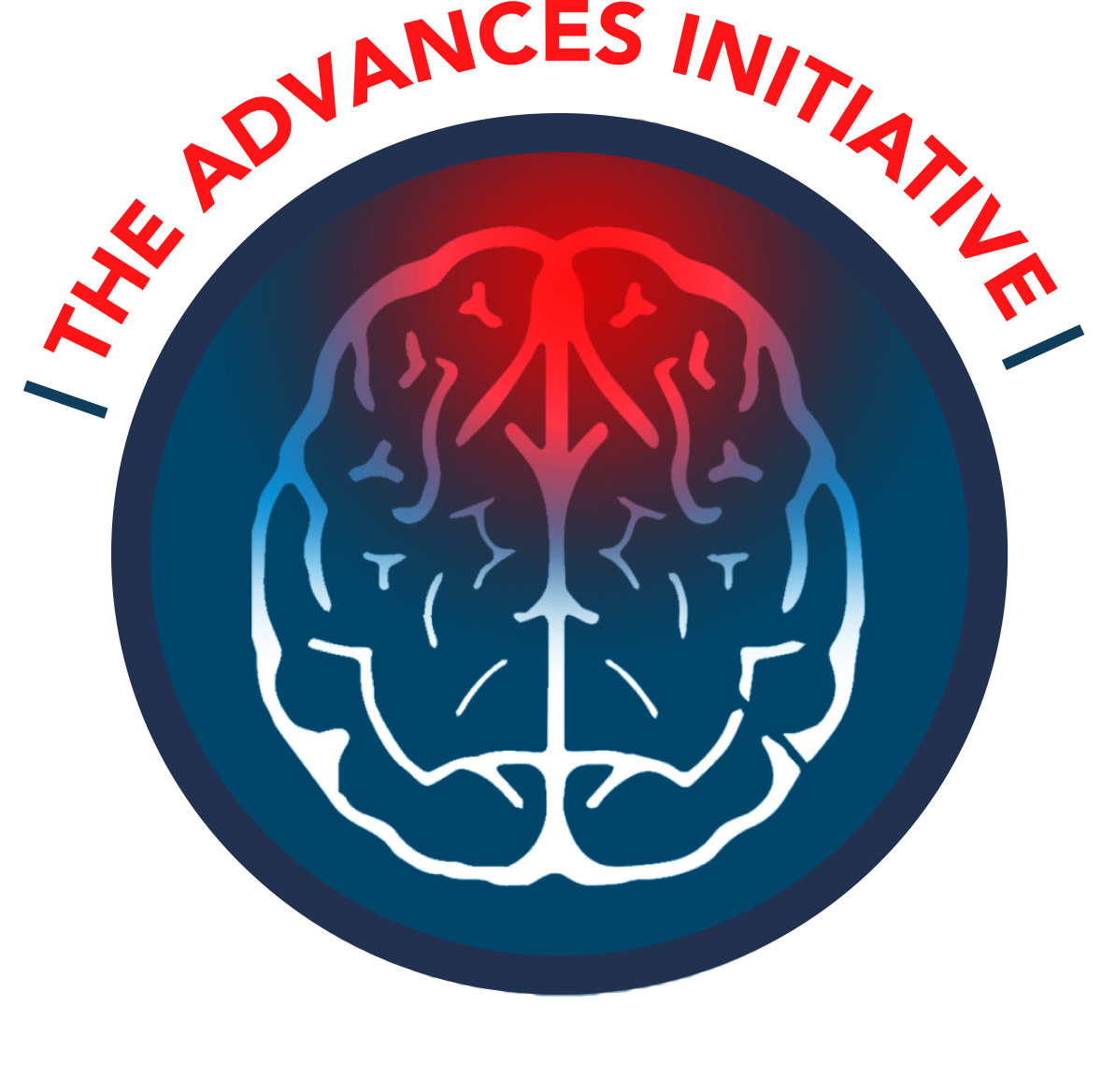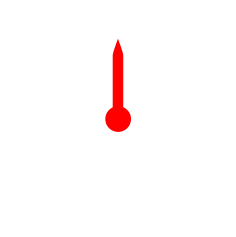<div id="headache-map" class="container-fluid"><!-- [et_pb_line_break_holder] --> <div class="row"><!-- [et_pb_line_break_holder] --> <div class="col-md-12"><!-- [et_pb_line_break_holder] --> <h2 class="headache-grid-title text-center">Types of Headaches</h2><!-- [et_pb_line_break_holder] --> <h3 class="sub-title text-center">Hover and click on various images to learn more</h2><!-- [et_pb_line_break_holder] --> <!-- [et_pb_line_break_holder] --> <div class="scroll-nav"><!-- [et_pb_line_break_holder] --> <div class="nav-holder"><a href="javascript:openModal('headache1');" class="headache-thumb headache-1"><!-- [et_pb_line_break_holder] --> <img src="https://migraineadvances.com/wp-content/themes/divi-child/headache-map/img/img-holder.png" /><!-- [et_pb_line_break_holder] --> <div class="symptoms-box"><!-- [et_pb_line_break_holder] --> <h4>Symptoms</h4><!-- [et_pb_line_break_holder] --> <p>Headache is rapid onset, extremely painful, and often described as the most severe headache ever experienced. There may be nuasea, vomiting, confusion, loss of consciousness, or a seizure.</p><!-- [et_pb_line_break_holder] --> </div><!-- [et_pb_line_break_holder] --> </a></div><!-- [et_pb_line_break_holder] --> <div class="nav-holder"><a href="javascript:openModal('headache2');" class="headache-thumb headache-2"><!-- [et_pb_line_break_holder] --> <img src="https://migraineadvances.com/wp-content/themes/divi-child/headache-map/img/img-holder.png" /><!-- [et_pb_line_break_holder] --> <div class="symptoms-box"><!-- [et_pb_line_break_holder] --> <h4>Symptoms</h4><!-- [et_pb_line_break_holder] --> <p>Like with migraine, there is pain on both sides of the head (bilateral), that is throbbing (pulsating). It occurs <24 hours after ceasing caffeine.</p><!-- [et_pb_line_break_holder] --> </div><!-- [et_pb_line_break_holder] --> </a></div><!-- [et_pb_line_break_holder] --> <div class="nav-holder"><a href="javascript:openModal('headache3');" class="headache-thumb headache-3"><!-- [et_pb_line_break_holder] --> <img src="https://migraineadvances.com/wp-content/themes/divi-child/headache-map/img/img-holder.png" /><!-- [et_pb_line_break_holder] --> <div class="symptoms-box"><!-- [et_pb_line_break_holder] --> <h4>Symptoms</h4><!-- [et_pb_line_break_holder] --> <p>Chronic migraine (CM) is defined as ≥15 headache days per month for ≥3 months, in which ≥8 days per month meet the criteria for migraine with or without aura or respond to migraine-specific treatment.</p><!-- [et_pb_line_break_holder] --> </div><!-- [et_pb_line_break_holder] --> </a></div><!-- [et_pb_line_break_holder] --> <div class="nav-holder"><a href="javascript:openModal('headache4');" class="headache-thumb headache-4"><!-- [et_pb_line_break_holder] --> <img src="https://migraineadvances.com/wp-content/themes/divi-child/headache-map/img/img-holder.png" /><!-- [et_pb_line_break_holder] --> <div class="symptoms-box"><!-- [et_pb_line_break_holder] --> <h4>Symptoms</h4><!-- [et_pb_line_break_holder] --> <p>This one-sided pain, usually around one eye, forehead or temple, most often reaches maximum intensity quickly (within 5-10 minutes) and lasts from 15 minutes to 3 hours. Pain is severe and is often described as the worst pain ever felt. Pain occurs seasonally for 80% of sufferers (often spring or fall). Patient can have blocked or runny nose on same side as headache, eye symptoms (redness, watering, or drooping eyelid), or facial flushing/sweating. It is more common in men (five to six times) and typically begins between 20 and 50 years of age.</p><!-- [et_pb_line_break_holder] --> </div><!-- [et_pb_line_break_holder] --> </a></div><!-- [et_pb_line_break_holder] --> <div class="nav-holder"><a href="javascript:openModal('headache5');" class="headache-thumb headache-6"><!-- [et_pb_line_break_holder] --> <img src="https://migraineadvances.com/wp-content/themes/divi-child/headache-map/img/img-holder.png" /><!-- [et_pb_line_break_holder] --> <div class="symptoms-box"><!-- [et_pb_line_break_holder] --> <h4>Symptoms</h4><!-- [et_pb_line_break_holder] --> <p>Mild recurrent pain occurs on both sides of the front of the head (frontal and bilateral) and is provoked by eye strain.</p><!-- [et_pb_line_break_holder] --> </div><!-- [et_pb_line_break_holder] --> </a></div><!-- [et_pb_line_break_holder] --> <div class="nav-holder"><a href="javascript:openModal('headache6');" class="headache-thumb headache-5"><!-- [et_pb_line_break_holder] --> <img src="https://migraineadvances.com/wp-content/themes/divi-child/headache-map/img/img-holder.png" /><!-- [et_pb_line_break_holder] --> <div class="symptoms-box"><!-- [et_pb_line_break_holder] --> <h4>Symptoms</h4> <!-- [et_pb_line_break_holder] --> <p>Headache occurs during or after strenuous sustained exercise. Usually throbbing, it affects both sides of the head (bilateral) and lasts from 5 minutes to 48 hours.</p><!-- [et_pb_line_break_holder] --> </div><!-- [et_pb_line_break_holder] --> </a></div><!-- [et_pb_line_break_holder] --> <div class="nav-holder"><a href="javascript:openModal('headache7');" class="headache-thumb headache-7"><!-- [et_pb_line_break_holder] --> <img src="https://migraineadvances.com/wp-content/themes/divi-child/headache-map/img/img-holder.png" /><!-- [et_pb_line_break_holder] --> <div class="symptoms-box"><!-- [et_pb_line_break_holder] --> <h4>Symptoms</h4><!-- [et_pb_line_break_holder] --> <p>This mild-to-moderate headache located at the front of the head (frontal), it is not throbbing (non-pulsatile).</p><!-- [et_pb_line_break_holder] --> </div><!-- [et_pb_line_break_holder] --> </a></div><!-- [et_pb_line_break_holder] --> <div class="nav-holder"><a href="javascript:openModal('headache8');" class="headache-thumb headache-8"><!-- [et_pb_line_break_holder] --> <img src="https://migraineadvances.com/wp-content/themes/divi-child/headache-map/img/img-holder.png" /><!-- [et_pb_line_break_holder] --> <div class="symptoms-box"><!-- [et_pb_line_break_holder] --> <h4>Symptoms</h4><!-- [et_pb_line_break_holder] --> <p>Headache and tenderness can be persistent and severe, usually involving both temples with scalp tenderness. There can be fever, jaw pain (on chewing or opening the mouth wide), tiredness, weight loss, and sudden visual loss in one eye or double vision.</p><!-- [et_pb_line_break_holder] --> </div><!-- [et_pb_line_break_holder] --> </a></div><!-- [et_pb_line_break_holder] --> <div class="nav-holder"><a href="javascript:openModal('headache9');" class="headache-thumb headache-9"><!-- [et_pb_line_break_holder] --> <img src="https://migraineadvances.com/wp-content/themes/divi-child/headache-map/img/img-holder.png" /><!-- [et_pb_line_break_holder] --> <div class="symptoms-box"><!-- [et_pb_line_break_holder] --> <h4>Symptoms</h4><!-- [et_pb_line_break_holder] --> <p>This moderate-to-severe headache is diffuse (widespread) and accompanied by fever (high temperature) and other symptoms and clinical signs of infection.</p><!-- [et_pb_line_break_holder] --> </div><!-- [et_pb_line_break_holder] --> </a></div><!-- [et_pb_line_break_holder] --> <div class="nav-holder"><a href="javascript:openModal('headache10');" class="headache-thumb headache-10"><!-- [et_pb_line_break_holder] --> <img src="https://migraineadvances.com/wp-content/themes/divi-child/headache-map/img/img-holder.png" /><!-- [et_pb_line_break_holder] --> <div class="symptoms-box"><!-- [et_pb_line_break_holder] --> <h4>Symptoms</h4><!-- [et_pb_line_break_holder] --> <p>Headache tends to be worst in the morning and resolve throughout the day.</p><!-- [et_pb_line_break_holder] --> </div><!-- [et_pb_line_break_holder] --> </a></div><!-- [et_pb_line_break_holder] --> <div class="nav-holder"><a href="javascript:openModal('headache11');" class="headache-thumb headache-11"><!-- [et_pb_line_break_holder] --> <img src="https://migraineadvances.com/wp-content/themes/divi-child/headache-map/img/img-holder.png" /><!-- [et_pb_line_break_holder] --> <div class="symptoms-box"><!-- [et_pb_line_break_holder] --> <h4>Symptoms</h4><!-- [et_pb_line_break_holder] --> <p>Headache is similar to a migraine, occuring either around menstruation or ovulation.</p><!-- [et_pb_line_break_holder] --> </div><!-- [et_pb_line_break_holder] --> </a></div><!-- [et_pb_line_break_holder] --> <div class="nav-holder"><a href="javascript:openModal('headache12');" class="headache-thumb headache-12"><!-- [et_pb_line_break_holder] --> <img src="https://migraineadvances.com/wp-content/themes/divi-child/headache-map/img/img-holder.png" /><!-- [et_pb_line_break_holder] --> <div class="symptoms-box"><!-- [et_pb_line_break_holder] --> <h4>Symptoms</h4><!-- [et_pb_line_break_holder] --> <p>Headache has symptoms of migraine plus an aura. Aura symptoms can develop progressively over 5 minutes, last 5-60 minutes, and are classified by the part of the nervous system that is affected (visual, sensory, motor, or language). Visual auras occur most commonly, with symptoms including zigzag lines, shimmering lights, and scotoma (an area of lost or reduced vision). A wide range of other aura symptoms can occur, including pins and needles in the face, tongue, or other body area; vertigo ( feeling of loss of balance or whirling); and tinnitus (ringing in the ears).</p><!-- [et_pb_line_break_holder] --> </div><!-- [et_pb_line_break_holder] --> </a></div><!-- [et_pb_line_break_holder] --> <div class="nav-holder"><a href="javascript:openModal('headache13');" class="headache-thumb headache-13"><!-- [et_pb_line_break_holder] --> <img src="https://migraineadvances.com/wp-content/themes/divi-child/headache-map/img/img-holder.png" /><!-- [et_pb_line_break_holder] --> <div class="symptoms-box"><!-- [et_pb_line_break_holder] --> <h4>Symptoms</h4><!-- [et_pb_line_break_holder] --> <p>This moderate-to-severe throbbing pain is made worse by movement. It has a gradual onset, peaks, and then subsides lasting 4-72 hours. Headache: 60% are one sided, 40% occur on both sides. Headaches occur 1-10 times per month. Patients may have gastrointerstinal (tummy) upsets and sensitivity to light and/or noises.</p><!-- [et_pb_line_break_holder] --> </div><!-- [et_pb_line_break_holder] --> </a></div><!-- [et_pb_line_break_holder] --> <div class="nav-holder"><a href="javascript:openModal('headache14');" class="headache-thumb headache-14"><!-- [et_pb_line_break_holder] --> <img src="https://migraineadvances.com/wp-content/themes/divi-child/headache-map/img/img-holder.png" /><!-- [et_pb_line_break_holder] --> <div class="symptoms-box"><!-- [et_pb_line_break_holder] --> <h4>Symptoms</h4><!-- [et_pb_line_break_holder] --> <p>Patients can often pinpoint exactly when symptoms started. Headaches develop rapidly, and the level of pain may fluctuate, but it is always there (often on both sides of the head), and there can be sensitivity to light and sound. Pain most often throbbing, but can feel stabbing, tightening, burning, or aching.</p><!-- [et_pb_line_break_holder] --> </div><!-- [et_pb_line_break_holder] --> </a></div><!-- [et_pb_line_break_holder] --> <div class="nav-holder"><a href="javascript:openModal('headache15');" class="headache-thumb headache-15"><!-- [et_pb_line_break_holder] --> <img src="https://migraineadvances.com/wp-content/themes/divi-child/headache-map/img/img-holder.png" /><!-- [et_pb_line_break_holder] --> <div class="symptoms-box"><!-- [et_pb_line_break_holder] --> <h4>Symptoms</h4><!-- [et_pb_line_break_holder] --> <p>Headache happens after mild traumatic brain injury. It can include symptoms of concussion, such as dizziness, neck pain, loss of balance, nausea and vomiting, poor memory or concentration, irritability, and difficulty sleeping. Patient can have symptoms similar to migraine or a tension-type headache.</p><!-- [et_pb_line_break_holder] --> </div><!-- [et_pb_line_break_holder] --> </a></div><!-- [et_pb_line_break_holder] --> <div class="nav-holder"><a href="javascript:openModal('headache16');" class="headache-thumb headache-16"><!-- [et_pb_line_break_holder] --> <img src="https://migraineadvances.com/wp-content/themes/divi-child/headache-map/img/img-holder.png" /><!-- [et_pb_line_break_holder] --> <div class="symptoms-box"><!-- [et_pb_line_break_holder] --> <h4>Symptoms</h4><!-- [et_pb_line_break_holder] --> <p>Patient has constant pain in cheekbones, forehead, or bridge of nose and may have other associated sinus symptoms, such as fever or nasal discharge (a runny nose). Self-diagnosed cases may be migraine.</p><!-- [et_pb_line_break_holder] --> </div><!-- [et_pb_line_break_holder] --> </a></div><!-- [et_pb_line_break_holder] --> <div class="nav-holder"><a href="javascript:openModal('headache17');" class="headache-thumb headache-17"><!-- [et_pb_line_break_holder] --> <img src="https://migraineadvances.com/wp-content/themes/divi-child/headache-map/img/img-holder.png" /><!-- [et_pb_line_break_holder] --> <div class="symptoms-box"><!-- [et_pb_line_break_holder] --> <h4>Symptoms</h4><!-- [et_pb_line_break_holder] --> <p>Patient has pain and tenderness in the temples, assocated with face, jaw, neck, or shoulder pain. The jaw may make clicking or popping sounds and may become stuck. Problems opening mouth wide.</p><!-- [et_pb_line_break_holder] --> </div><!-- [et_pb_line_break_holder] --> </a></div><!-- [et_pb_line_break_holder] --> <div class="nav-holder"><a href="javascript:openModal('headache18');" class="headache-thumb headache-18"><!-- [et_pb_line_break_holder] --> <img src="https://migraineadvances.com/wp-content/themes/divi-child/headache-map/img/img-holder.png" /><!-- [et_pb_line_break_holder] --> <div class="symptoms-box"><!-- [et_pb_line_break_holder] --> <h4>Symptoms</h4><!-- [et_pb_line_break_holder] --> <p>This dull, aching, non-pulsating headache has a feeling of tightness/pressure across the forehead, back, and sides of the head. Headache is associated with scalp, neck, and shoulder tension/tenderness. For a comparison with the syptoms of migraine and tension-type headache, please click here.</p><!-- [et_pb_line_break_holder] --> </div><!-- [et_pb_line_break_holder] --> </a></div><!-- [et_pb_line_break_holder] --> <div class="nav-holder"><a href="javascript:openModal('headache19');" class="headache-thumb headache-19"><!-- [et_pb_line_break_holder] --> <img src="https://migraineadvances.com/wp-content/themes/divi-child/headache-map/img/img-holder.png" /><!-- [et_pb_line_break_holder] --> <div class="symptoms-box"><!-- [et_pb_line_break_holder] --> <h4>Symptoms</h4><!-- [et_pb_line_break_holder] --> <p>Headache consists of severe, sudden, short lasting, stabbing face pain.</p><!-- [et_pb_line_break_holder] --> </div><!-- [et_pb_line_break_holder] --> </a></div><!-- [et_pb_line_break_holder] --> <div class="nav-holder"><a href="javascript:openModal('headache20');" class="headache-thumb headache-20"><!-- [et_pb_line_break_holder] --> <img src="https://migraineadvances.com/wp-content/themes/divi-child/headache-map/img/img-holder.png" /><!-- [et_pb_line_break_holder] --> <div class="symptoms-box"><!-- [et_pb_line_break_holder] --> <h4>Symptoms</h4><!-- [et_pb_line_break_holder] --> <p>Symptoms vary depending upon the type and location of the tumor and usually develop slowly and progessively. Headache can be diffuse and may not respond to usual headache remedies. Nausea or vomiting is possible. A range of neurological syptoms can occur, depending on tumor location.</p><!-- [et_pb_line_break_holder] --> </div><!-- [et_pb_line_break_holder] --> </a></div><!-- [et_pb_line_break_holder] --> </div> <!-- [et_pb_line_break_holder] --><!-- [et_pb_line_break_holder] --> </div><!-- [et_pb_line_break_holder] --> </div><!-- [et_pb_line_break_holder] --></div><!-- [et_pb_line_break_holder] --><link rel="stylesheet" href="https://maxcdn.bootstrapcdn.com/font-awesome/4.7.0/css/font-awesome.min.css" type="text/css"><!-- [et_pb_line_break_holder] --><link href="https://fonts.googleapis.com/css?family=Open+Sans:300,400,700|Oswald:300,400,700" rel="stylesheet"> <!-- [et_pb_line_break_holder] --><link rel="stylesheet" href="https://migraineadvances.com/wp-content/themes/divi-child/headache-map/map.css" type="text/css"><!-- [et_pb_line_break_holder] --><script type="text/javascript" src="https://maxcdn.bootstrapcdn.com/bootstrap/3.3.7/js/bootstrap.min.js"></script><!-- [et_pb_line_break_holder] --><script type="text/javascript"><!-- [et_pb_line_break_holder] -->function openModal(modal_name) {<!-- [et_pb_line_break_holder] -->setTimeout(function(){<!-- [et_pb_line_break_holder] --> jQuery('#' + modal_name).modal('show');<!-- [et_pb_line_break_holder] -->}, 1500);<!-- [et_pb_line_break_holder] -->}<!-- [et_pb_line_break_holder] --></script>

.jpg)
.jpg)
.jpg)
.jpg)

.jpg)
.jpg)

.jpg)
.jpg)
.jpg)
.jpg)
.jpg)
.jpg)
.jpg)
.jpg)
.jpg)
.jpg)
.jpg)
.jpg)
.jpg)
.jpg)
.jpg)
.jpg)
.jpg)
.jpg)
.jpg)
.jpg)
.jpg)
.jpg)
.jpg)
.jpg)
.jpg)
.jpg)
.jpg)
.jpg)
.jpg)
.jpg)
.jpg)
.jpg)
.jpg)
.jpg)
 Copyright © 2024 Med Learning Group. Built by
Copyright © 2024 Med Learning Group. Built by